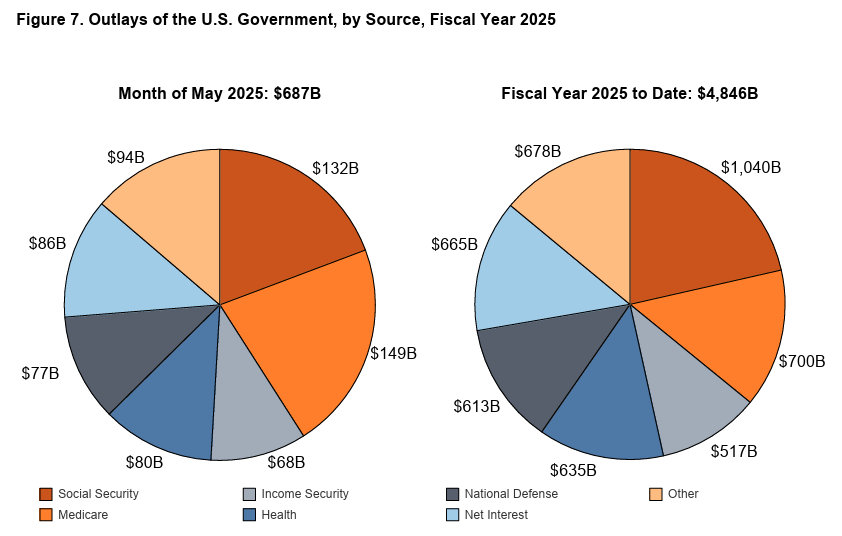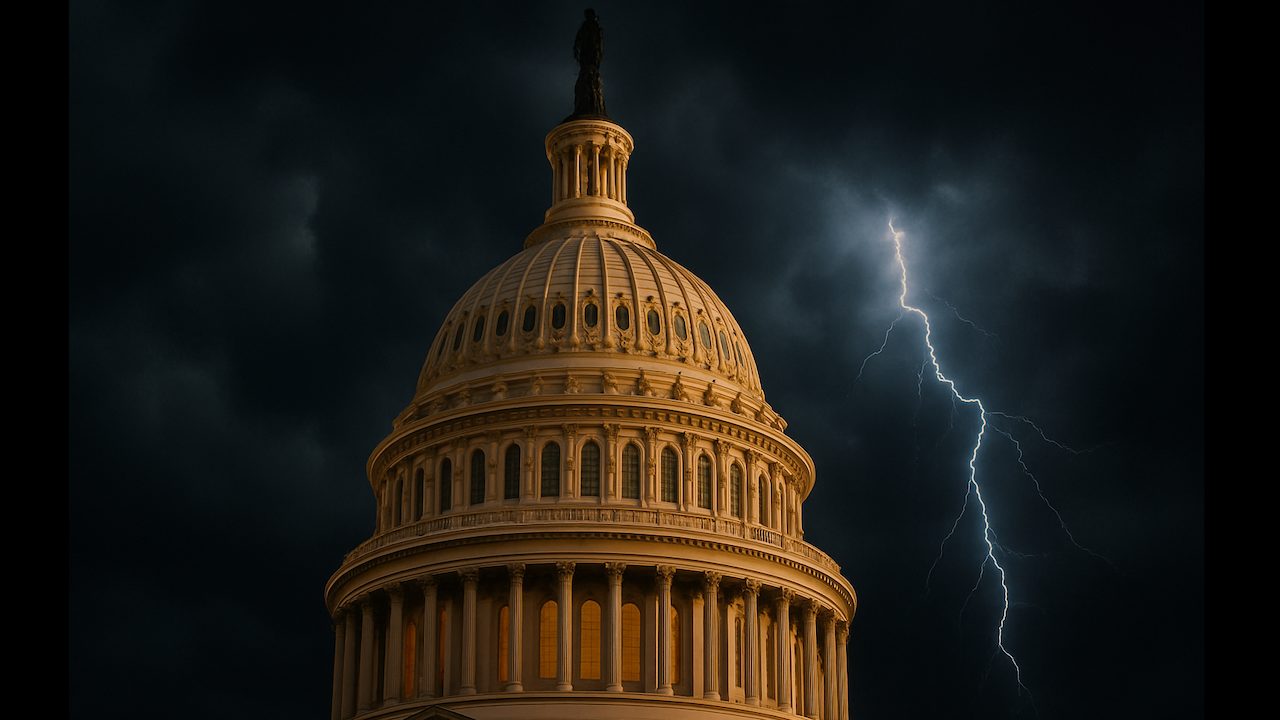(Mike Maharrey, Money Metals News Service) After running a surplus in April thanks to tax day, the federal government was back to business as usual in May, spending massive amounts of money and charting another big budget deficit.
At $316 billion, the May budget shortfall was the second-largest of the fiscal year. That drove the fiscal 2024 deficit to $1.36 trillion. That compares to a $1.2 trillion deficit through the same period last year.
Thanks to a healthy increase in government receipts, the deficit was 9 percent smaller than in May 2024, but spending was up significantly year-on-year.
Uncle Sam collected $371.23 billion last month. That was a 14.7 percent increase over May 2024.
It’s a Spending Problem!
This underscores the fact that the U.S. government doesn’t have a revenue problem. It has a spending problem.
The Trump administration blew through $687.23 billion in May alone. That was 2.5 percent higher than last May.
So far in fiscal 2025, the federal government has spent a staggering $4.85 trillion, an 8 percent increase over the same period in 2024.

You might recall that President Biden promised that the [pretend] spending cuts would save “hundreds of billions” with the debt ceiling deal (aka the [misnamed] Fiscal Responsibility Act).
That never happened.
And the Republicans aren’t doing much better, despite DOGE’s successes in ferreting out wasteful spending. The CBO projects that a budget reconciliation bill moving through Congress would add $2.4 billion to the deficit over the next decade. Supporters claim the tax cuts in the bill will “pay for themselves” by stimulating economic growth and ultimately shrinking the deficit, but history casts significant doubt on this claim.
The ugly truth is the government isn’t committed to cutting spending in any meaningful way, and it always finds new reasons to spend even more, whether for “crises” at home or wars overseas.
The Interest Problem
The federal government is being increasingly burdened by its skyrocketing interest expense. This is one of the reasons President Trump and others in the administration are pressuring the Federal Reserve to slash interest rates.
Interest on the national debt cost $92.23 billion in May. That brought the total interest expense for the fiscal year to $776.34 billion, up 6.7 percent over the same period in 2024.
So far, in fiscal 2025, the federal government has spent more on interest on the debt than it has on national defense ($613 billion) or Medicare ($700 billion). The only higher spending category is Social Security ($1.04 trillion).
Uncle Sam paid $1.13 trillion in interest expenses in fiscal 2024. It was the first time interest expense had ever eclipsed $1 trillion. Projections are for interest expense to break that record in fiscal 2025.
Much of the debt currently on the books was financed at very low rates before the Federal Reserve started its hiking cycle. Every month, some of that super-low-yielding paper matures and has to be replaced by bonds yielding much higher rates. And even after the Federal Reserve cut rates, Treasury yields have pushed upward as demand for U.S. debt sags.
The Big Picture
These big deficits pile onto a national debt that officially topped $36 trillion in November. Currently, the debt level is steady because the federal government is up against the debt ceiling. However, you can expect a huge surge in debt once Congress raises the ceiling. (And it will raise the ceiling.)
Some people claim that borrowing, spending, and big national debts don’t matter.
According to the national debt clock, the current debt level represents 122.98 percent of the GDP. Studies have shown a debt-to-GDP ratio of over 90 percent retards economic growth by about 30 percent.
And as the Bipartisan Policy Center points out, the growing national debt and the mounting fiscal irresponsibility undermine the dollar.
“Confidence in U.S. creditworthiness may be undermined by a rapidly deteriorating fiscal situation, an increasing concern with federal debt set to grow substantially in the coming years.”
This could lead to lower economic growth, higher unemployment, and less investment wealth.
Lack of confidence in the U.S. fiscal situation could also lower demand for U.S. debt. This would force interest rates on U.S. Treasuries even higher to attract investors, exacerbating the interest payment problem. As already mentioned, we saw a big spike in Treasury yields despite Fed rate cuts. Yields increased again in the wake of the trade war. There is growing evidence that Treasuries are already losing their safe-haven appeal.
Biden ran the debt higher at a dizzying pace, but to be fair, this isn’t just a Biden problem. Every president since Calvin Coolidge has left the U.S. with a bigger national debt than when he took office.
It’s going to take more than DOGE rooting out waste to get the borrowing and spending under control. Even if the Trump administration manages to slash discretionary outlays as promised, that only accounts for 27 percent of total spending. The vast majority is for entitlements, and there is little political will to take the scissors to Social Security or Medicare.
And the sad fact is that, given the political incentives, people in power will always kick the debt can down the road. It is a long-term problem that will require painful measures to fix. Politicians don’t want to create pain. That’s a quick path out of office. So, they will punt the debt problem and spend more to make constituents happy.
This is all well and good, but the problem with playing kick the can down the road is that you eventually run out of road.
Mike Maharrey is a journalist and market analyst for Money Metals with over a decade of experience in precious metals. He holds a BS in accounting from the University of Kentucky and a BA in journalism from the University of South Florida.

